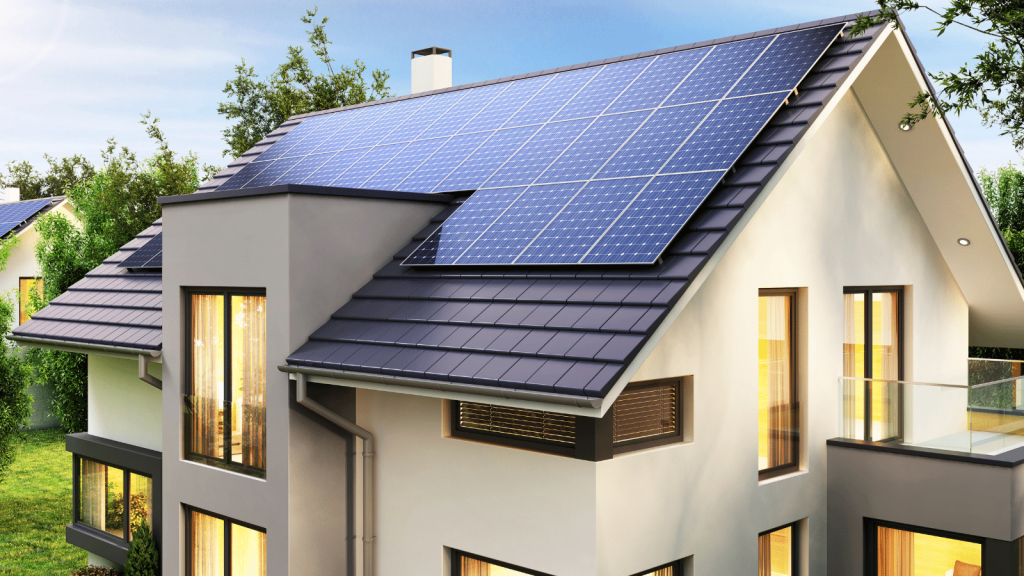
Solar panels are a fantastic way to become more eco-friendly, reduce your carbon footprint, and increase the value of your home, all whilst saving significant amounts on your energy bills every single year.
It is common knowledge that solar panels can any you money by reducing the amount of electricity you need to purchase from the national grid.
Did you also know, however, that you can also export any excess energy into the grid yourself, and get paid to do so?
This is exactly what is offered by the Smart Export Guarantee Scheme, currently available to all homeowners in the UK who produce their own renewable energy.
This article will examine exactly how solar panel installation can help you both save and make money and explain why there has never been a more appropriate time to invest in solar energy.
How can solar panels save you money?
It is estimated that most people will break even on their solar panel installation in around 10 years, impressive, given that photovoltaic and PV panels are designed to last upwards of 25.
Any money made, or saved, after the break-even point, is pure profit, making solar panels one of the best long-term financial investments that you can make.
But how exactly do solar panels Scotland return an investment?
Well, there are two main ways to recoup the installation costs of solar panels.
Firstly, by saving money on your energy bills, and secondly by selling excess energy through the Smart Export Guarantee scheme.
Save money with lower energy bills
The main reason that many people choose to install solar panels is to become more self-sufficient and reduce their reliance on ever more expensive fossil fuels.
Every year, by generating your own energy you could save as much as £500 off your energy bills, and the higher that prices rise, the more valuable the electricity that you generate will become.
It is impossible to give an exact figure for the amount that you will save as this depends on a number of different factors, primarily the size of the system in question but also the energy demands of your property, when it is that you use the most electricity, weather conditions, and more.
If you work from home, for example, you are likely to see larger savings as you will use more energy when production levels are at their highest.
To maximise your energy independence, you could consider installing a solar battery alongside your panels which will allow you to store energy that is not required immediately and utilise it when supply is low, during the night.
Bear in mind, however, that if you go down this route you will need to factor in the cost of purchasing and installing a battery when calculating potential savings.
Sell electricity through the Smart Export Guarantee (SEG)
The Smart Export Guarantee allows solar panel owners across the UK to sell energy that they generate back into the national grid.
All energy companies with over 150,000 customers are required to offer an SEG tariff by the Government but there are no restrictions over what this tariff has to be and rates vary from just 1p/kWh to market leading rates of as much as 7.5p/kWh.
This variation means that in order to maximise the money you make from your solar panels, it is worth doing some research into the best options in your area and sticking with your current energy provider is unlikely to be the best option.
It is worth noting that even the very best SEG rates fall well below the market rate for buying electricity in the UK, 34.0p/kWh in 2022, so using your electricity in your own home, rather than selling it is always the most cost-effective way forward.
However, for those who do not have a solar battery installed, it is unrealistic to expect to use all the energy generated as supply almost always far exceeds demand during periods of high production.
SEG means that you will at least get some value out of this excess energy and ensure that not a single unit goes to waste.
What about the Feed-In-Tariff?
If you have had solar panels for a number of years, or have talked to friends or family who have, you have probably heard of the Feed-In Tariff.
This scheme preceded the SEG and is now closed to new applicants. The FIT not only paid homeowners for the energy they exported but for all of the energy they generated, even that used in their own home.
If you already have a FIT contract in place, you will still be able to collect payments until its expiration but if not, the SEG is your only route forward.